China Shipbuilding for Taiwan Firm Likely Aiding Chinese Navy Build-up
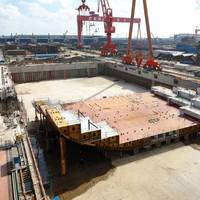
Contracts between China's top state-owned shipbuilding firm and Taiwan's leading shipping company are likely lowering the costs of upgrading China's navy, posing security concerns for the island claimed by Beijing, a U.S. think tank said on Thursday.China State Shipbuilding Corp (CSSC) is a key producer of vessels for China's rapidly expanding People's Liberation Army Navy (PLAN), and is thought to be building its third aircraft carrier.Taiwan's Evergreen Marine Corp has purchased 44 vessels from China since 2018…
U.S. Navy: Constellation-class Brings Frigates Back to the U.S. Fleet
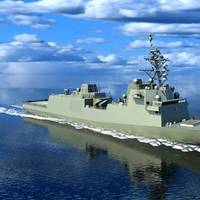
Introducing a new class of warship can be fraught with pain, and the first ship is always the hardest – almost always behind schedule and over budget. And trying something new and transformational is even harder.The U.S. Navy knows this from experience. That’s one reason why the Navy is opting for a lower risk design for its next class of guided missile frigates (FFGs).Just about every new class has experienced a rough start. Although the USS Arleigh Burke-class of guided missile destroyers (DDGs) today represent the largest and most successful class of warships…
Vigor Wins Modernization Contract for Two Navy Cruisers
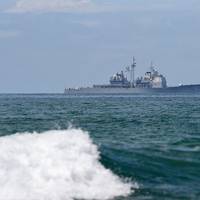
Vigor was awarded a $254,566,431.36 firm-fixed-price contract for the execution of USS Chosin (CG 65) and USS Cape ST. George (CG 71) Modernization Periods (MODPRD). The contract includes options, which if exercised would bring the cumulative value of this contract to $303,677,110.Work will include a combination of maintenance, modernization and repair. The modernizations will keep these ships combat effective to support fleet operations for many years to come.Work will be performed at Vigor's Harbor Island facility in Seattle…
Today in U.S. Naval History: May 7
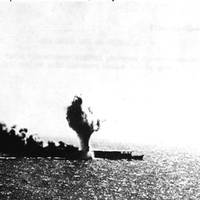
1942 - Carrier aircraft sink Japanese carrier Shoho during Battle of Coral Sea. The first day of the carrier battle of Coral Sea, May 7 1942, saw the Americans searching for carriers they knew were present and the Japanese looking for ones they feared might be in the area. The opposing commanders, U.S. Rear Admiral Frank Jack Fletcher and Japanese Vice Admiral Takeo Takagi and Rear Admiral Tadaichi Hara, endeavored to "get in the first blow", a presumed prerequisite to victory (and to survival) in a battle between heavily-armed and lightly-protected aircraft carriers.
This Day in U.S. Naval History: May 1
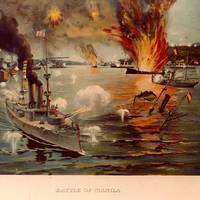
Before dawn on May 1, 1898, Commodore George Dewey's flagship Olympia led seven U.S. Navy cruisers and gunboats into Manila Bay. By 8 AM that morning Dewey's Asiatic Squadron had located and destroyed virtually the entire Spanish naval force in the Philippines. Damage to the American ships was negligible, and their crews suffered no fatalities and few injuries. The Battle of Manila Bay was a singular demonstration of the daring and decisive application of sea power. In a few hours, Dewey had eliminated any threat that the Spanish Navy might pose to U.S.
West Coast Maritime Action
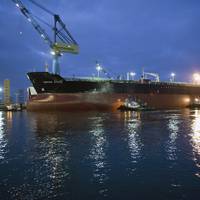
While maritime activity showing renewed signs of life along the entire Pacific Coast, from Prince Rupert to San Diego, shipbuilding is becoming ever-more dependant on the US Navy and Jones Act ships, while ship-repair yards are focused on a broad spectrum of boats and ships. In California, some of that work has focused on re-powering harbor craft to meet the state’s stringent environmental regulations. Along the Columbia River, shipyards remain centered on meeting the on-going demand for ocean-going barges…
Sperry Marine Gets Contract
The U.S. Naval Sea Systems Command has awarded a contract to Northrop Grumman Corporation to supply integrated bridge systems (IBS) for three U.S. Navy cruisers. The indefinite-delivery indefinite-quantity contract, valued at $2.72m, was awarded to Northrop Grumman’s Sperry Marine business unit. Under the contract, the new-generation IBS, running on Sperry Marine’s Voyage Management System (VMS) software, will be back-fitted onto three guided-missile cruisers (CG). Sperry Marine has supplied similar VMS-based integrated navigation systems for hundreds of commercial vessels worldwide, including tankers, container ships, bulk carriers and passenger cruise ships.
Navy Signs $72.8M Contract
Military contractor Raytheon Co. landed a $72.8m contract from the U.S. Navy to provide the Royal Australian Navy with radar equipment. Raytheon's Integrated Defense Systems unit will provide system transmitters, hardware and spares for radar systems on three Air Warfare Destroyer ships. The work will be done at Raytheon plants in Massachusetts and Rhode Island. Components of the radar system are already in use on U.S. Navy cruisers and destroyers. (Source: Ninemsn)
Raytheon Gets $72.8M Navy Contract
The AP reported that military contractor Raytheon Co. said it got a $72.8m contract from the U.S. Navy to provide the Royal Australian Navy with radar equipment. Raytheon's Integrated Defense Systems unit will provide system transmitters, hardware and spares for radar systems on three Air Warfare Destroyer ships. The work will be done at Raytheon plants in Massachusetts and Rhode Island. Components of the radar system are already in use on U.S. Navy cruisers and destroyers.






